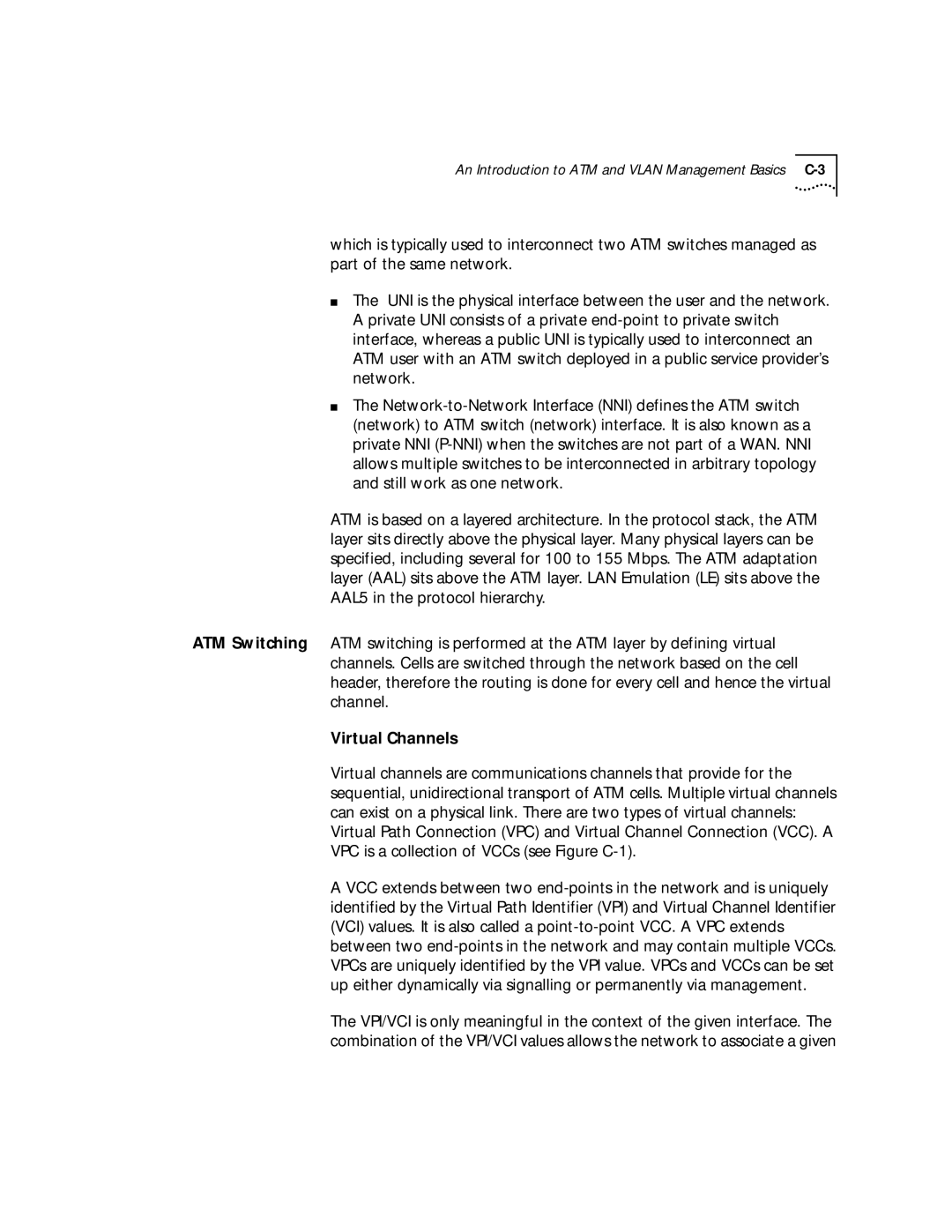An Introduction to ATM and VLAN Management Basics
which is typically used to interconnect two ATM switches managed as part of the same network.
■The UNI is the physical interface between the user and the network. A private UNI consists of a private
■The
ATM is based on a layered architecture. In the protocol stack, the ATM layer sits directly above the physical layer. Many physical layers can be specified, including several for 100 to 155 Mbps. The ATM adaptation layer (AAL) sits above the ATM layer. LAN Emulation (LE) sits above the AAL5 in the protocol hierarchy.
ATM Switching ATM switching is performed at the ATM layer by defining virtual channels. Cells are switched through the network based on the cell header, therefore the routing is done for every cell and hence the virtual channel.
Virtual Channels
Virtual channels are communications channels that provide for the sequential, unidirectional transport of ATM cells. Multiple virtual channels can exist on a physical link. There are two types of virtual channels: Virtual Path Connection (VPC) and Virtual Channel Connection (VCC). A VPC is a collection of VCCs (see Figure
A VCC extends between two
The VPI/VCI is only meaningful in the context of the given interface. The combination of the VPI/VCI values allows the network to associate a given
